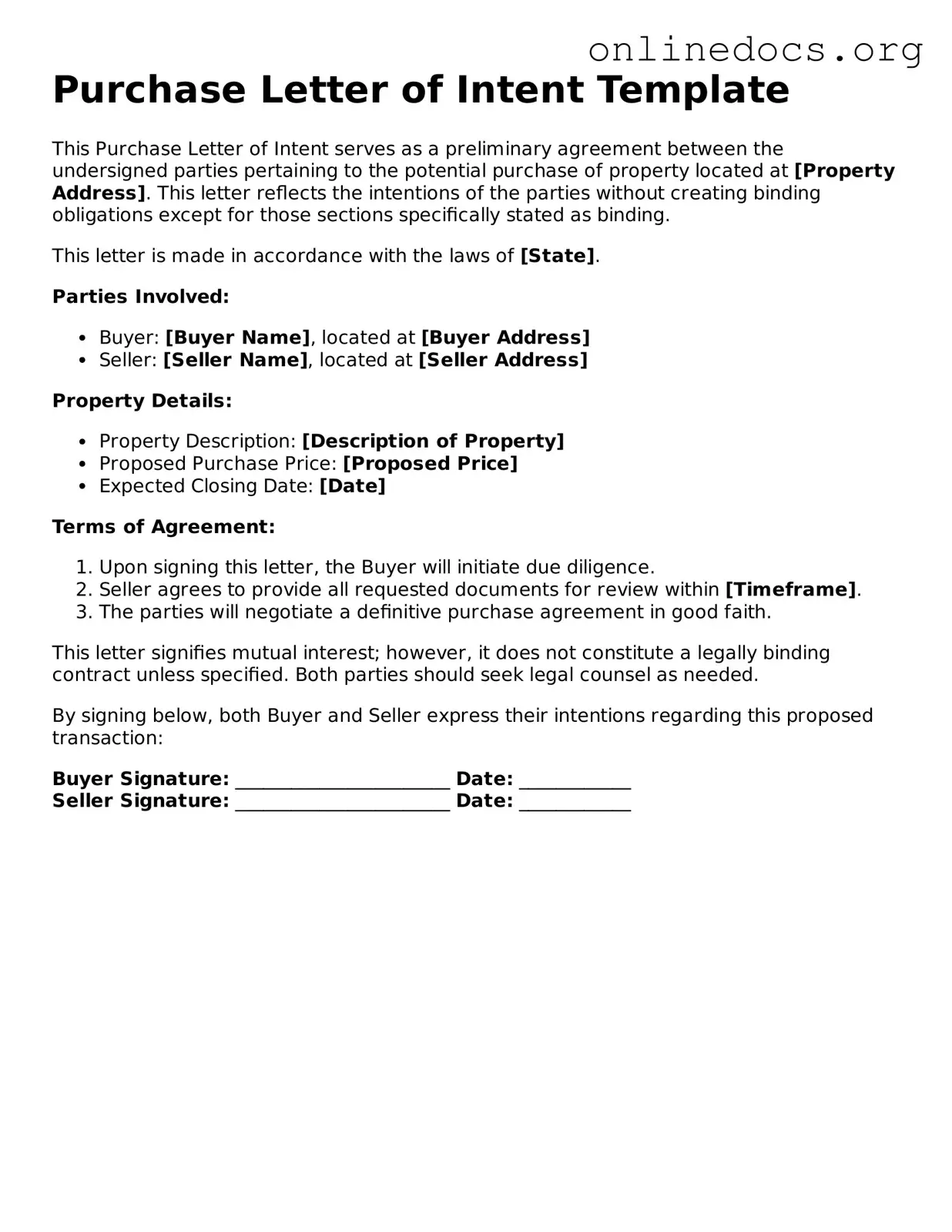The Purchase Letter of Intent (LOI) is akin to a Memorandum of Understanding (MOU). Both documents serve as preliminary agreements that outline the intentions of the parties involved. An MOU is typically less formal than a contract, yet it establishes a mutual understanding of the terms that will guide future negotiations. Like the LOI, it may include key details such as the scope of the deal and the responsibilities of each party, setting the stage for a more binding agreement later on.
Another document similar to the Purchase Letter of Intent is the Term Sheet. A Term Sheet summarizes the key points of a proposed transaction, including pricing, timelines, and conditions. It acts as a roadmap for the negotiation process, providing a framework that both parties can refer to. While it is not legally binding, it reflects the intent of the parties to move forward with the transaction, similar to how an LOI indicates a commitment to negotiate in good faith.
In the context of homeschooling, understanding the necessary documentation is crucial, and one key element is the Arizona Homeschool Letter of Intent. This form not only notifies state authorities of a family's intent to homeschool but also provides clarity on the educational framework parents plan to establish. For more guidance on this important document, you can refer to legalpdfdocs.com/arizona-homeschool-letter-of-intent-template, which offers a comprehensive template to help ensure compliance with state requirements.
The Non-Disclosure Agreement (NDA) also shares similarities with the Purchase Letter of Intent. While the LOI focuses on the terms of a potential transaction, the NDA protects sensitive information exchanged during negotiations. Both documents are crucial in the early stages of a business deal. They ensure that parties can discuss important details without fear of confidential information being misused, fostering a trusting environment for negotiations.
A Letter of Intent to Lease is another document that mirrors the Purchase LOI. This letter outlines the basic terms and intentions for leasing a property. Just as the Purchase LOI indicates a desire to buy, the leasing LOI signals an interest in renting. Both documents serve as a starting point for more detailed agreements, allowing parties to establish their intentions before drafting a formal contract.
The Joint Venture Agreement (JVA) is also similar to the Purchase Letter of Intent. A JVA outlines the terms under which two or more parties will collaborate on a specific project. Like the LOI, it lays out the intentions of the parties involved, including their contributions and expectations. While the JVA is more detailed and legally binding, both documents highlight the parties' commitment to work together toward a common goal.
In addition, the Engagement Letter bears resemblance to the Purchase Letter of Intent. An Engagement Letter typically outlines the terms of service between a client and a service provider. It sets expectations for the relationship, including scope, fees, and responsibilities. Both documents serve to clarify intentions and provide a framework for the relationship, whether in purchasing a business or engaging professional services.
The Offer to Purchase is another document that parallels the Purchase Letter of Intent. An Offer to Purchase is a formal proposal made by a buyer to a seller, indicating the buyer's intent to acquire a property or business at specified terms. Similar to the LOI, it outlines the key terms of the proposed transaction and often serves as a precursor to a more formal agreement, reflecting the buyer's serious interest in the deal.
Finally, the Business Proposal shares characteristics with the Purchase Letter of Intent. A Business Proposal outlines a plan for a potential business transaction or partnership. It includes details about the objectives, strategies, and benefits of the proposed deal. Both documents aim to communicate intentions clearly and establish a basis for further discussions, paving the way for more detailed agreements to follow.
